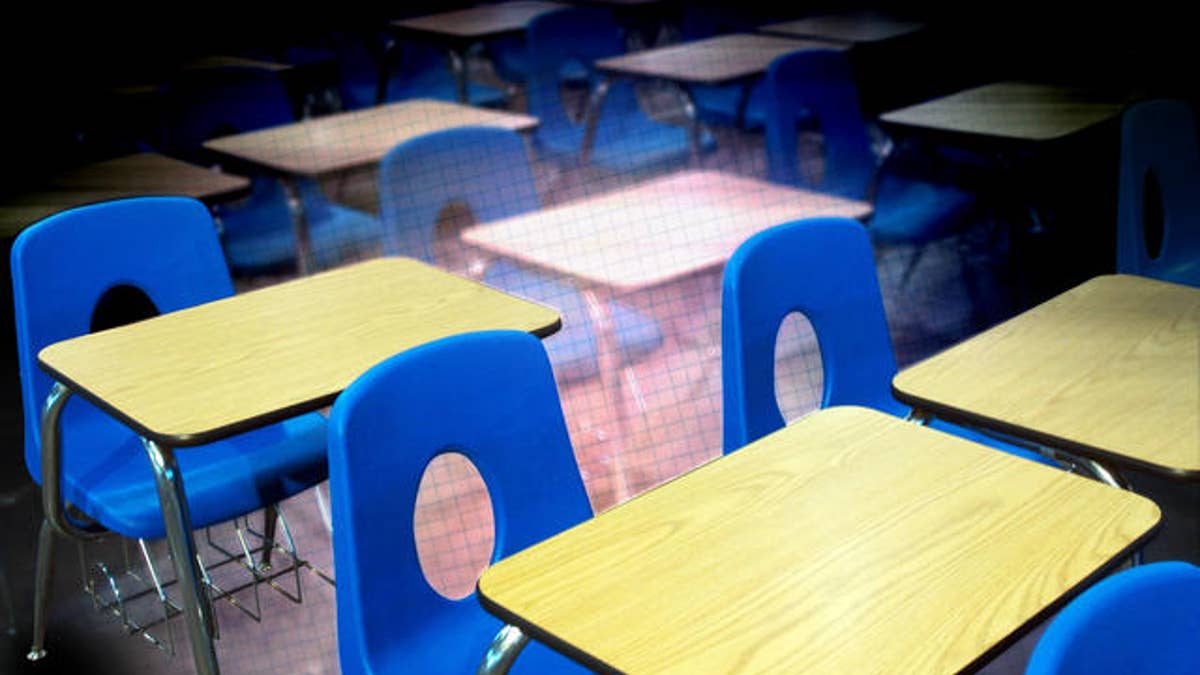
Classroom desks used at Decker College await auction Friday, Feb. 10, 2006 at the site of the former school in Louisville, Ky. Decker, a for-profit trade school run by former Massachusetts Gov. William Weld, is now closed, mired in bankruptcy proceedings and under FBI investigation in a case that has cast a long shadow over Weld's bid to become the next governor of New York. (AP Photo/Brian Bohannon) (AP)
If the quality of public schools can be measured by the amount of money spent per student, then U.S. students should be performing fabulously.
The national average in fiscal year 2009 was $10,499, a 2.3 percent increase over the previous year, according to the U.S. Census Bureau, citing data from Public Education: 2009.
Some states spent way above the national average, starting with New York, which spent $18,126 per student. Other top spenders include Washington ($16,408), New Jersey ($16,271), Alaska ($15,552), and Vermont ($15,175).
The states that spent the least amount per student were Utah ($6,356), Idaho, ($7,092), Arizona ($7,813), Oklahoma ($7,885) and Tennessee ($7,897).
"Most children in the United States rely on public schools for their education, so it's important for people to understand how available resources are being spent within the public education system," said Lisa Blumerman, chief of the Census Bureau's governments division. "These data provide a detailed look at how taxpayer money is being spent on education."
But the amount of money states spent on each student didn't necessarily correlate with how well their schools performed -- at least under measurements set up in the No Child Left Behind Act.
In Utah, the lowest per-student spending state, 21 percent of schools failed to meet the goals set under that federal education law. In New York, the highest per-student spending state, 38 percent of schools fell short.
The dollars-per-student ratio may come as a surprise considering that public schools across the country are struggling with cuts in state funding, increasing labor costs and lower tax revenues.
An economic impact survey released this week by the American Association of School Administrators (AASA) shows that 65 percent of school districts cut back on personnel in the 2010-11 school year and that 74 percent anticipate doing so in the next school year.
The organization estimated that 227,000 education jobs will be eliminated in the next school year, leading to larger class sizes and less spending. President Obama is requesting $48.8 billion for the Education Department in his 2012 budget proposal, an increase of $2 billion, or 4.3 percent, over his request in his 2011 budget.
According to the Census survey, in 2009, public schools collectively spent nearly $605 billion, a 2 percent increase from the previous year. The spending was fueled by $590.9 billion in funding from federal, state and local sources, an increase of 1.5 percent from the previous year.
State governments contributed $276.2 billion, or 46.7 percent, of that amount. The rest came from revenue raised through local sources ($258.9 billion, or 43.8 percent), and federal sources ($55.9 billion, or 9.5 percent).




